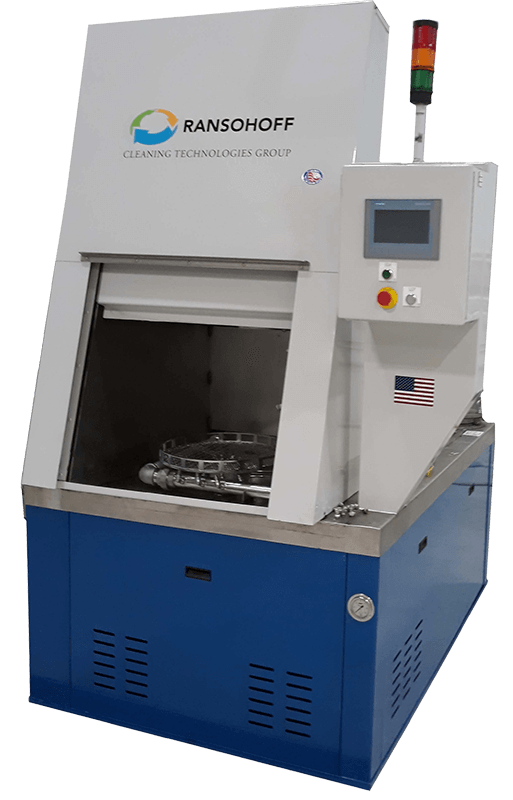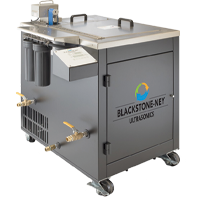
When looking for an alternative to environmentally harmful parts cleaning solvents, manufacturers have turned to aqueous parts cleaning methods, including ultrasonic parts cleaning. In this post we’ll provide an overview of both aqueous parts cleaning and ultrasonic parts cleaning, and what to consider when choosing a parts cleaning method.
What is Aqueous Parts Cleaning?
Aqueous parts washers offer the cleansing power of solvent-based parts washing but uses water as its primary cleaning agent. Solvents can be used with the water in aqueous cleaning, depending on the parts cleaning requirements. These may include things such as emulsifiers, Inhibitors, anti-foaming agents, PH buffers, and more.
The determination of the most effective aqueous parts cleaning approach for a given application begins with the following questions:
- What parts are being cleaned?
- How detailed are the parts?
- What materials are involved?
- What is the production time allowance?
- What are the customer requirements?
From there, the best equipment technology can be selected. Methods of aqueous cleaning can involve immersion or soaking, standard and high pressure spraying, or ultrasonics.
For some types of parts and manufacturing processes, parts soaking does not do an adequate job of removing objectionable materials. Different types of spray technology can be used, if it is possible to direct the spray nozzles sufficiently to provide complete cleaning and removal of debris. When factors such as part complexity will not allow for acceptable spray or immersion cleaning, ultrasonics can provide an extra level of cleaning power.
What is Ultrasonic Parts Cleaning?

Ultrasonic cleaning involves the use of an aqueous water solution combined with high frequency sound waves that are used to produce cavitation bubbles. These bubbles help dissolve and displace contaminants. In some cases, ultrasonics can be used to accelerate standard spray and total immersion processes by introducing the power of cavitation to the cleaning system.
For assistance in selecting the right system to meet your needs, contact us today!



 English
English Spanish
Spanish Chinese
Chinese Canada
Canada Mexico
Mexico United Kingdom
United Kingdom




